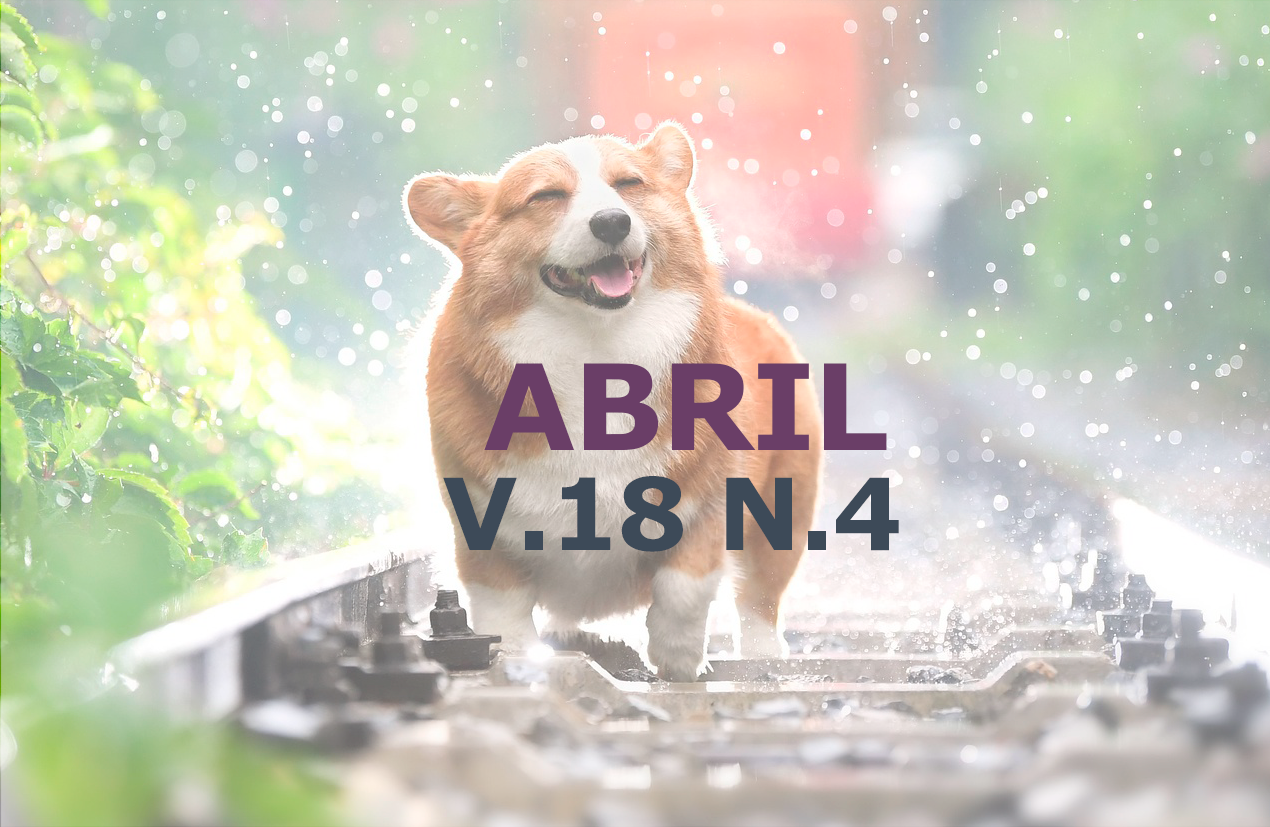Radiodiagnóstico de osteodistrofia hipertrófica em cão Fila Brasileiro
Relato de caso
DOI:
https://doi.org/10.31533/pubvet.v18n04e1576Palavras-chave:
cão, fila brasileiro, osteodistrofia hipertrófica, radiodiagnósticoResumo
A osteodistrofia hipertrófica é um distúrbio ósseo idiopático que afeta cães jovens de raças grandes e gigantes, cuja etiologia permanece desconhecida. Este distúrbio está associado a fatores como suplementação excessiva de vitaminas, hipovitaminose C e microrganismos infecciosos. As manifestações clínicas incluem febre, claudicação, sensibilidade dolorosa e sintomas sistêmicos variados. Os sinais radiográficos revelam zonas radio transparentes adjacentes às linhas fisárias de ossos longos. O presente relato aborda o radiodiagnóstico de osteodistrofia hipertrófica em cadela Fila Brasileiro de oito meses, que inicialmente manifestou desvio cifótico na coluna, hiporexia, fezes amolecidas, fraqueza e atrofia muscular. Os exames laboratoriais indicaram alterações nos níveis de proteína, fosfatase alcalina, colesterol, cálcio e fósforo. Radiografias evidenciaram lise óssea em epífise e não união do processo ancôneo. O tratamento adotado incluiu correção dietética e suplementação de vitaminas e minerais. Embora a etiologia permaneça desconhecida, fatores genéticos, infecciosos e dietéticos são considerados predisponentes. Os sinais radiográficos característicos incluem o aspecto de fise dupla, necrose por colapso do trabeculado ósseo e reações periosteais. O tratamento, focado na correção da dieta e suplementação, resultou em melhora clínica e remissão parcial dos sinais radiográficos.
Referências
Barone, G. (2015). Tratado de medicina veterinária. Guanabara Koogan S.A.
Demko, J., & McLaughlin, R. (2005). Developmental orthopedic disease. Veterinary Clinics: Small Animal Practice, 35(5), 1111–1135. https://doi.org/10.1016/j.cvsm.2005.05.002.
Fossum, T. W. (2021). Cirurgia de pequenos animais (3ed.). Elsevier Editora.
Ghadiri, A. R., Veshkin, R., & Veshkini, A. (2007). Radiographic findings of hypertrophic osteodystrophy in a mongrel puppy. Iranian Journal of Veterinary Research, 8(2), 178–181.
Johnson, J. M., Johnson, A. L., & Eurell, J. A. (1994). Histological appearance of naturally occurring canine physeal fractures. Veterinary Surgery, 23(2), 81–86. https://doi.org/10.1111/j.1532-950x.1994.tb00450.x.
Kieves, N. R. (2021). Juvenile disease processes affecting the forelimb in canines. Veterinary Clinics: Small Animal Practice, 51(2), 365–382. https://doi.org/10.1016/j.cvsm.2020.12.004.
Laflamme, D. P. (1977). Development and validation of body condition score system for dogs: a clinical tool. Canine Practice, 22(3), 10–15.
Larsson, C. E., & Lucas, R. (2016). Tratado de medicina externa: dermatologia veterinária. Interbook.
Moxham, G. (2001). Waltham feces scoring system-A tool for veterinarians and pet owners: How does your pet rate. Waltham Focus, 11(2), 24–25.
Radhika, R., Zarina, A., Ramnath, V., Karthiayini, K., & George, A. (2022). Serum minerals and bone specific enzymes status in chronic bone disorders in canines. The Pharma Innovation Journal, 2022.
Safra, N., Johnson, E. G., Lit, L., Foreman, O., Wolf, Z. T., Aguilar, M., Karmi, N., Finno, C. J., & Bannasch, D. L. (2013). Clinical manifestations, response to treatment, and clinical outcome for Weimaraners with hypertrophic osteodystrophy: 53 cases (2009–2011). Journal of the American Veterinary Medical Association, 242(9), 1260–1266. https://doi.org/10.2460/javma.242.9.1260.
Salt, C., Morris, P. J., Butterwick, R. F., Lund, E. M., Cole, T. J., & German, A. J. (2020). Comparison of growth patterns in healthy dogs and dogs in abnormal body condition using growth standards. PloS One, 15(9), e0238521. https://doi.org/10.1371/journal.pone.0238521.
Selman, J., & Millard, H. T. (2022). Hypertrophic osteodystrophy in dogs. Journal of Small Animal Practice, 63(1), 3–9. https://doi.org/10.1111/jsap.13413.
Sulficar, S., Vellappally, A., Unny, N. M., Nair, S. S., & Ajithkumar, S. (2019). Successful therapeutic management of hypertrophic osteodystrophyin three meopolitan mastiff littermates. Indian Journal of Canine Practice, 11(1). https://doi.org/10.29005/IJCP.2019.11.1.001-004.
Thrall, D. E. (2019). Diagnóstico de radiologia veterinária. Guanabara Koogan S.A.
Tôrres, R. C. S., Nepomuceno, A. C., Miranda, F. G., Souza, I. P., Coelho, N. D., Pinto, P. C. O., Prestes, R. S., Melo, T. K. D., Correa, J. C., & Berbert, L. H. (2019). Radiologia dos ossos e articulações de cães e gatos. Caderno Técnico da Escola Veterinária da UFMG, 93, 34–35.
Tostes, R. A., Reis, S. T. J., & Castilho, V. V. (2017). Tratado de medicina veterinária legal (Vol. 1). MedVep.
Downloads
Publicado
Edição
Seção
Licença
Copyright (c) 2024 Tainá Rodrigues de Oliveira Zamian, Marta Maria Circhia Pinto Luppi, Douglas Segalla Caragelasco, Fernanda Meireles dos Reis, Gabriela Barbosa de Almeida, Júlia Borrelli Aielo, João Vitor Fraianella Teixeira de Godoy, Victória Gabriela das Neves, Michele Andrade de Barros

Este trabalho está licenciado sob uma licença Creative Commons Attribution 4.0 International License.
Você tem o direito de:
Compartilhar — copiar e redistribuir o material em qualquer suporte ou formato
Adaptar — remixar, transformar, e criar a partir do material para qualquer fim, mesmo que comercial.
O licenciante não pode revogar estes direitos desde que você respeite os termos da licença. De acordo com os termos seguintes:
Atribuição
— Você deve dar o crédito apropriado, prover um link para a licença e indicar se mudanças foram feitas. Você deve fazê-lo em qualquer circunstância razoável, mas de nenhuma maneira que sugira que o licenciante apoia você ou o seu uso. Sem restrições adicionais
— Você não pode aplicar termos jurídicos ou medidas de caráter tecnológico que restrinjam legalmente outros de fazerem algo que a licença permita.





